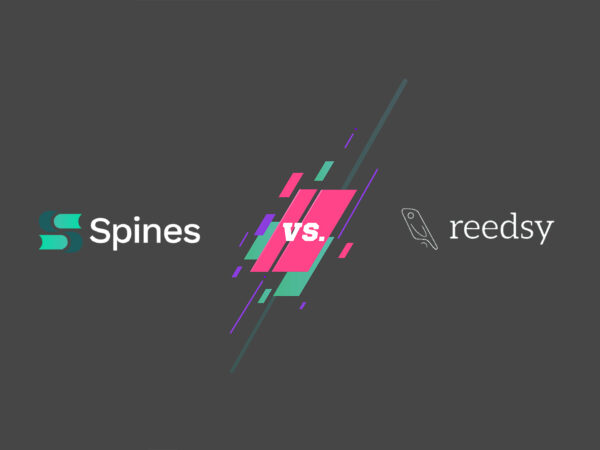In 2023, the self-publishing landscape continues to evolve, offering more opportunities and resources for authors than ever before. This democratization of the publishing process has empowered a diverse array of writers to bypass traditional gatekeepers, allowing for a direct pathway to their intended audience. However, the allure of self-publishing also brings with it a complex web of decisions and costs that aspiring authors must navigate. Understanding the intricacies of self-publishing costs is not just beneficial—it’s essential for anyone looking to successfully launch their book into the world.
The journey from manuscript to published book involves several stages, each with its own set of expenses. From editing and cover design to formatting, distribution, and marketing, the costs can vary widely depending on the choices an author makes. Additionally, the rise of platforms like Spines highlights the ever-changing nature of the industry, offering more affordable routes to publication. With the landscape so varied and dynamic, a thorough grasp of the potential expenses involved is crucial for authors to make informed decisions that align with their creative and financial goals.
This foundation is especially important when contrasting self-publishing with the traditional publishing route, which offers a different set of advantages, challenges, and costs. As we delve into the details of self-publishing costs in 2023, we aim to provide a clear, comprehensive guide to help authors plan their publishing journey with confidence.
The Basics of Self-Publishing
Self-publishing is an increasingly popular route for authors, characterized by the individual taking on the role of publisher for their own work. This process involves a wide range of responsibilities, from writing and editing to designing, marketing, and distributing the book. Unlike traditional publishing, where a publishing house manages these tasks, self-publishing places the control squarely in the hands of the author.
The contrast with traditional publishing routes is significant. In traditional publishing, an author typically submits their manuscript to publishing houses or literary agents in the hope of securing a publishing deal. This route can offer advantages such as professional editing, cover design, and marketing support. However, it also means relinquishing a certain degree of control over the creative process, with publishers often having the final say on aspects like final edits, book design, and marketing strategies. Moreover, getting noticed by traditional publishers can be challenging, with acceptance rates being low and the process often lengthy.
Self-publishing, on the other hand, ensures authors retain complete creative control over their work. This autonomy allows for immediate decision-making, from the thematic elements of the book to its aesthetic presentation and pricing. Additionally, self-publishing offers the advantage of targeted audience engagement. Authors can directly interact with their readers through various platforms and tailor their marketing efforts to reach their intended audience more effectively. This direct line to readers not only enhances promotional strategies but also builds a loyal fan base, making it a compelling choice for authors who wish to maintain control over their publishing journey and closely connect with their audience.
Your Publishing Journey Awaits – Start NowInitial Costs: Editing and Design
The journey from manuscript to published book is fraught with critical decisions, none more important than those concerning editing and design. These initial stages lay the groundwork for a book’s success, impacting readability, aesthetics, and ultimately, sales potential.
Professional Editing: A Three-Pronged Approach
Professional editing is not a singular task but a multi-layered process involving developmental editing, line editing, and copy editing. Each stage serves a unique purpose and contributes significantly to the quality of the final product.
Developmental Editing focuses on the structure, content, and flow of the book. It’s the first and most intensive form of editing, where major aspects like plot coherence, character development, and pacing are scrutinized. A developmental editor helps authors shape their narrative, ensuring the story is compelling and logically structured.
Line Editing comes next, concentrating on the use of language and writing style. This stage polishes the manuscript, enhancing clarity, tone, and readability without altering the author’s voice.
Copy Editing is the final sweep, aimed at correcting grammar, punctuation, spelling, and syntax errors. It’s crucial to ensure the book is free of distracting mistakes that could detract from the reader’s experience.
The costs for these editing services can vary widely, depending on the length of the manuscript and the editor’s experience. Authors need to research and choose editors whose expertise aligns with their genre and who offer transparent pricing to avoid any surprises.
The Art of Cover Design
The adage “Don’t judge a book by its cover” doesn’t hold in the publishing world. A book’s cover is its first impression, a critical marketing tool that can attract or repel potential readers. Investing in a professional cover designer is vital for creating a visually appealing cover that resonates with the target audience and genre conventions. Designers can command a range of fees, but this is one area where cutting corners can significantly impact a book’s marketability.
Navigating Book Formatting
Formatting a book for print and ebook formats is another essential step, with its own set of challenges. Print books require precise formatting to ensure a professional appearance, taking into account margins, headers, footers, and font sizes. Ebooks, while more flexible, still demand careful formatting to ensure compatibility across various e-reading devices and platforms. This process can be daunting, but several tools and services are available to help authors navigate this stage. Some authors may opt for DIY formatting using software like the Reedsy Book Editor, while others might prefer hiring a professional formatter to ensure their book meets industry standards.
Each of these initial costs—editing, cover design, and formatting—are critical investment in the quality and potential success of a self-published book. While it might be tempting to minimize expenses in these areas, authors should consider the long-term benefits of presenting a polished, professionally crafted product to their readers. The upfront costs can indeed be significant, but they lay the foundation for a book’s success in a crowded and competitive market.
Self-Publishing Platforms and Distribution
Navigating the myriad of self-publishing platforms is a crucial step for authors aiming to reach their audience effectively. Among the plethora of options, Amazon Kindle Direct Publishing (KDP) and Apple Books emerge as popular choices, each offering unique benefits and its own costs and considerations.
Your Publishing Journey Awaits – Start NowAmazon Kindle Direct Publishing (KDP)
Amazon’s KDP stands as a titan in the self-publishing world, providing a straightforward path for authors to self-publish for both eBooks and paperbacks. The platform is renowned for its vast audience reach, given Amazon’s dominance in the online retail space. KDP operates on a royalty system, where authors can choose between a 35% or 70% royalty rate, depending on the book’s list price, geographical sales region, and adherence to specific criteria set by Amazon. While there are no upfront fees for publishing, authors should be mindful of KDP’s cost structure for print books, which is based on page count and ink type, potentially affecting pricing strategies.
Apple Books
Apple Books offers a platform that caters to a tech-savvy readership, particularly those integrated into the Apple ecosystem. While it might not boast the same level of market penetration as Amazon, Apple Books provides a competitive royalty rate of 70% across all price points and regions, without the complex criteria Amazon imposes. The platform is known for its high-quality user experience and customer base willing to pay a premium for content, which can be advantageous for authors targeting a specific demographic.
Print-on-Demand Services vs. Bulk Printing
A significant consideration for self-published authors is the choice between print-on-demand (POD) distribution services and traditional bulk printing. POD, offered by platforms like KDP and IngramSpark, allows books to be printed individually as orders come in, eliminating the need for inventory and significantly reducing upfront costs. This model is ideal for authors seeking a risk-averse approach to print publishing, as it aligns costs directly with sales.
Conversely, bulk printing involves producing a large number of books in a single run, which can lower the cost per unit but requires a significant initial investment and poses the risk of unsold inventory. This method might be suitable for authors with a dedicated following or those planning extensive direct sales efforts at events or through personal networks.
In summary, selecting the right self-publishing platform and distribution method hinges on an author’s specific goals, target audience, and budget. While platforms like KDP and Apple Books offer broad reach and user-friendly interfaces, the choice between POD and bulk printing depends on an author’s sales strategy and risk tolerance. Understanding the nuances of each platform’s fee structure, royalty rates, and distribution capabilities is essential for maximizing a book’s potential reach and profitability.
Marketing and Advertising Costs
Marketing is the engine that propels a self-published book from obscurity into the hands of potential readers. In the digital age, the strategies and platforms available for book marketing are vast, yet each comes with its own cost implications. A well-thought-out marketing plan is crucial for self-published authors, blending both paid and cost-effective tactics to maximize reach and engagement.
The Crucial Role of Marketing
The primary role of marketing in the self-publishing realm is visibility. With thousands of books published daily, standing out in a crowded marketplace is a challenge. Effective marketing strategies introduce a book to potential readers and engage and entice them to make a purchase. This involves a mix of branding, promotion, and direct outreach, all aimed at building a connection with the target audience.
Budgeting for Paid Advertising
Paid advertising can offer a direct route to potential readers, albeit at a further cost to self publish Platforms like Facebook, Instagram, and Amazon offer targeted advertising options that can be tailored to reach specific demographics, interests, and even geographical locations. The cost of these campaigns can vary widely, making it essential for authors to set a clear budget and track the return on investment (ROI) meticulously.
Engaging with book bloggers and leveraging paid reviews are other avenues of paid promotion. These influencers can provide valuable exposure within specific reader communities. The cost here can range from sending a free copy of your book for review to more formal paid promotional arrangements. Authors need to research and choose reputable bloggers whose audience aligns with their book’s genre and target demographic.
Embracing Free and Cost-Effective Marketing Strategies
Not all marketing strategies come with a hefty price tag. Social media platforms offer a free and dynamic space for authors to connect with readers. Regularly posting content related to the book, engaging with followers, and participating in writing and reading communities can build significant organic reach.
Email marketing, starting with a modest list of friends, family, and early readers, can grow into a powerful tool for direct communication and promotion. Encouraging word-of-mouth, leveraging platforms like Goodreads, and participating in author interviews or podcasts are other cost-effective ways to increase visibility.
The Foundation of an Author Platform
At the heart of these marketing efforts is the author platform—a combination of a social media presence, a professional website, an engaging blog, and an active email list. Building this platform is a long-term investment that goes beyond a single book launch. A robust author platform provides a base from which to launch future titles, engage with readers, and build a sustainable writing career.
Balancing paid and free marketing strategies, while consistently working on building an author platform, are key components in the marketing playbook of a successful self-published author. With the right approach, authors can effectively reach their target audience without exhausting their budget, paving the way for both immediate and long-term success in the self-publishing world.
Your Publishing Journey Awaits – Start NowHidden Costs and How to Save Money
Embarking on the self-publishing journey can unveil a spectrum of hidden costs that might catch authors off guard. These unexpected expenses can stem from numerous revisions, unforeseen additional rounds of editing, book formatting costs, or last-minute changes in design. Such surprises can strain an already tight budget, making it crucial for authors to identify strategies to mitigate these costs without compromising the quality of their book.
Navigating Unanticipated Costs
Revisions post-feedback or after a professional edit can sometimes lead to substantial rewrites that might necessitate further rounds of editing. Each additional edit not only adds to the timeline but also inflates editing costs beyond the budget. Similarly, design tweaks or changes, whether in cover design or book formatting, can accrue additional fees, especially if they fall outside the scope of an initially agreed-upon package with designers.
Strategic Cost-Saving Measures
To circumvent these potential financial pitfalls, authors can employ several strategies. Utilizing beta readers is an effective and cost-efficient way to gain valuable feedback on early drafts. These early readers can highlight issues with plot, character development, or readability, allowing authors to make necessary adjustments before engaging professional editors, thereby reducing the rounds of costly professional edits.
Self-editing also plays a pivotal role in cost-saving measures. While it doesn’t replace professional editing, honing one’s self-editing skills can significantly improve the manuscript’s quality before it reaches an editor, thus reducing the professional editor’s workload and the associated costs. Resources and tools like writing software with grammar and style checks can aid in this process, catching errors that might otherwise slip through to later, more expensive stages of editing.
Balancing Cost-Effectiveness and Quality
The delicate dance between cutting costs and maintaining quality is central to the self-publishing process. While it’s tempting to slash expenses, it’s imperative to recognize which investments are non-negotiable for the sake of the book’s success. For instance, skimping on professional cover design or editing could adversely affect the book’s reception and sales.
Therefore, authors are encouraged to evaluate each aspect of the publishing process, distinguishing between areas where costs can be safely reduced and those that warrant investment. This discernment ensures that the book does not fall short of professional standards while keeping expenditures in check.
In summary, while hidden costs can emerge unexpectedly in the self-publishing journey, strategic planning, of marketing costs utilization of beta readers, self-editing, and a careful evaluation of essential investments versus potential areas for savings can help authors navigate these financial challenges. Achieving this balance is key to minimizing expenses without compromising the integrity and quality of the published work.

Spines: An Affordable Self-Publishing Platform
In the dynamic world of self-publishing, Spines emerges as a beacon for authors seeking both affordability and efficiency. As we navigate through 2023, Spines, an AI-driven publishing platform, distinguishes itself by offering a unique blend of AI services that not only streamline the publishing process but also significantly cut down on traditional costs. This platform is specially designed for budget-conscious authors, delivering a suite of comprehensive services at a fraction of the industry standard.
With Spines, authors can expedite their journey from manuscript to market, with a promise of transforming drafts into published works in under 30 days—a feat unmatched by many in the industry. This speed is complemented by a user-friendly dashboard, making the publishing process accessible to both novice and seasoned authors alike.
The platform’s affordability is a game-changer, offering comprehensive plans that are economically priced without compromising on quality. This cost efficiency is largely attributed to Spines’ pioneering use of AI, which optimizes various stages of production from formatting to cover design. Moreover, authors benefit from the dedicated support of a personal production manager, ensuring a smooth and guided experience throughout their publishing journey.
Spines is not just about print; it extends its services to all formats, including eBooks and audiobooks, ensuring authors can meet their audience’s preferences across different mediums. The platform’s global distribution network spans over 100 channels, including leading retailers like Amazon and Barnes & Noble, promising authors worldwide visibility.
Understanding the importance of trust and satisfaction, Spines stands behind its services with a 7-day money-back guarantee, offering peace of mind to authors as they embark on their publishing journey. Whether you’re a budding writer or an experienced author, Spines is designed to champion your success, ensuring your story reaches its intended audience with ease and impact.
Your Publishing Journey Awaits – Start NowComparing Self-Publishing Costs to Traditional Publishing
When comparing self-publishing to traditional publishing, the financial landscapes are markedly different. In traditional publishing, authors typically do not bear the upfront costs of editing, design, and marketing, as these are managed and funded by the publisher. Instead, authors receive an advance against royalties, a sum of money paid upfront upon contract signing. However, this advance must be “earned out” through book sales before any additional royalties are paid. Royalties in traditional publishing are often a smaller percentage of sales compared to the cost of publishing, primarily due to the publisher’s investment in the book’s production and promotion.
Furthermore, authors working with traditional publishers might have less control over their rights, including international and digital rights, which can affect long-term earnings. The traditional publisher’s control over the publishing timeline, marketing efforts, and creative decisions can also be significant factors.
These considerations lead some authors to opt for hybrid publishing, a middle ground where authors may pay for some services (like editing and design) but benefit from the publisher’s distribution networks and marketing efforts. Hybrid publishing can offer a compromise between the high control and costs of self-publishing and the lower costs but limited control of traditional publishing, allowing authors to tailor their approach to their specific needs and goals.
Navigating the Self-Publishing Journey: A 2023 Perspective
In 2023, authors diving into self-publishing must grasp the breadth of associated costs. It’s more than just crunching numbers; it’s about balancing these expenditures with the anticipated rewards and ensuring they align with both personal aspirations and career ambitions. The publishing realm is in constant flux, pushing authors to remain informed, flexible, and tactical in their strategies.
A thorough understanding of both the financial outlay and creative contributions required in self-publishing can shift the process from an overwhelming challenge to a fulfilling achievement. Authors are urged to navigate this terrain with insight and foresight, making informed decisions that pave the way to a successful and gratifying publishing experience.








